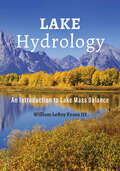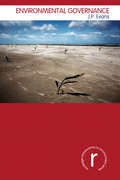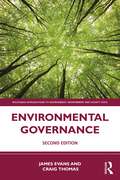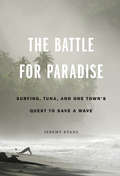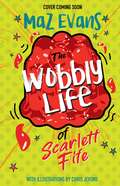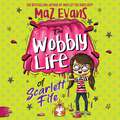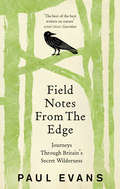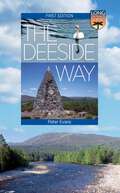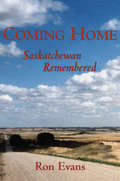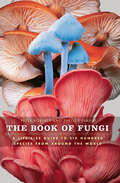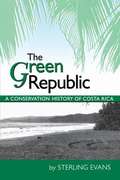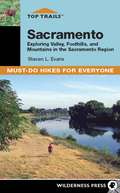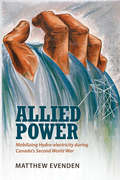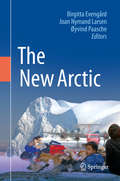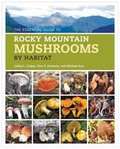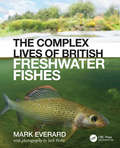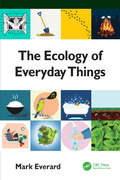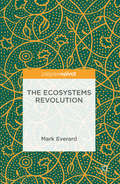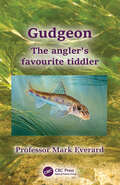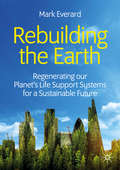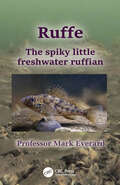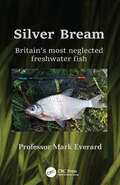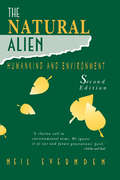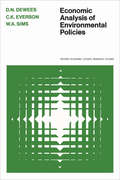- Table View
- List View
Lake Hydrology: An Introduction to Lake Mass Balance
by William LeRoy Evans IIIThe first book dedicated to describing the hydrology of water flow in lake systems, geared for limnologists and students of hydrology.With fresh water becoming a critical issue around the world, lake mass balance—the hydrology or water movement in lakes—is increasingly important to environmental studies and remediation projects. Unfortunately, lake hydrology is often only briefly covered in broader texts on hydrogeology and hydrology or is confined to specialized research papers. Lake Hydrology rigorously describes the hydrology of flow into and out of lake systems. Explaining the physical parameters that influence lake behavior, as well as the mathematics that describes these systems, this in-depth book fills an important niche in the literature of watershed science. This text• describes the physical structure and nature of drainage basins and explains the origin and classification of lakes• explores the hydrology of lake mass balance and storage as it pertains to lake stage, groundwater and lake bottom interaction, hypsometry, lake hydraulics, precipitation, surface flow, evaporation, and transpiration• provides models, practical information, and solutions for lake management or remediation planning utilizing basic data, including stage fluctuation, evapotranspiration, lake-bottom seepage, precipitation, and surface flow • uses examples from real-world long-term studies, including Utah's Great Salt Lake and Florida's Lake Jackson, a karstic lake system• examines the effect of storm events including the temporal and areal distribution of rainfall, and flow paths of water in the catchment from precipitation• includes an introduction to relevant scientific principles, such as dimensional analysis, the properties of water, and the hydrologic cycleUnlike most limnology texts, which emphasize lake ecology and biology, Lake Hydrology is designed to truly elucidate the hydrology of lake systems, especially as it relates to components of the hydrologic cycle. This book will greatly benefit professionals and researchers involved in lake management, remediation, or investigation of lake systems, and can be used as is or integrated within graduate and advanced undergraduate courses in limnology.
Environmental Governance (Routledge Introductions to Environment: Environment and Society Texts)
by J. P. EvansClimate change is prompting an unprecedented questioning of the fundamental bases upon which society is founded. Businesses claim that technology can save the environment, while politicians champion the role of international environmental agreements to secure global action. Economists suggest that we should pay developing countries not to destroy their forests, while environmentalists question whether we can solve ecological problems with the same thinking that created them. As the process of steering society, governance has a critical role to play in coordinating these disparate voices and securing collective action to achieve a more sustainable future. Environmental Governance is the only book to discuss the first principles of governance, while also providing a critical overview of the wide ranging theories and approaches that underpin policy and practice today. It places governance within its wider political context to explore how the environment is controlled, manipulated, regulated, and contested by a range of actors and institutions. This book shows how network and market governance have shaped current approaches to environmental issues, while also introducing emerging approaches such as transition management and adaptive governance. In so doing, it highlights the strengths and weaknesses of the different approaches currently in play, and considers their political implications. This text provides a groundbreaking overview of dominant and emerging approaches of environmental governance, drawing on cutting edge debates and forging critical links between them. Each chapter is complemented by case studies, key debates, questions for discussion and further reading. It is essential reading for students of the environment, politics and sociology, and, indeed, anyone concerned with changing society to secure a more sustainable future.
Environmental Governance (Routledge Introductions to Environment: Environment and Society Texts)
by James Evans Craig ThomasClimate change is prompting an unprecedented questioning of the fundamental bases upon which society is founded. Businesses claim that technology can save the environment, while politicians champion the role of international environmental agreements to secure global action. Economists suggest that we should pay developing countries not to destroy their forests, while environmentalists question whether we can solve ecological problems with the same thinking that created them. As the process of steering society, governance has a critical role to play in coordinating these disparate voices and securing collective action to achieve a more sustainable future. Environmental Governance is the only book to discuss the first principles of governance, while also providing a critical overview of the wide-ranging theories and approaches that underpin policy and practice today. It places governance within its wider political context to explore how the environment is controlled, manipulated, regulated and contested by a range of actors and institutions. This book shows how network and market governance have shaped current approaches to environmental issues, while also introducing approaches such as transition management and adaptive governance. In so doing, it highlights the strengths and weaknesses of the different approaches currently in play, and considers their political implications. This second edition has been comprehensively updated to build upon the success of the acclaimed first edition, with a new chapter on the environmental governance of outer space and updated analysis of international climate change summits. It provides a ground-breaking overview of dominant and emerging approaches of environmental governance, forging critical links between them. Each chapter has been updated with new case studies, key debates and figures, and includes questions for discussion and further reading. It is essential reading for students of the environment, politics and sociology, and, indeed, anyone concerned with changing society to secure a more sustainable future.
The Battle for Paradise: Surfing, Tuna, and One Town's Quest to Save a Wave
by Jeremy EvansCORRECTION:Regarding the book, The Battle for Paradise by Jeremy Evans, the following correction has been made on page 163 in paragraph three (3) to wit:“Weston once worked in concert with government officials in a pre-planned sting operation, complete with marked bills: Weston, whose role in the operation involved paying a bribe to the Golfito mayor for a concession and then documenting the bribe as a way to expose the mayor as a corrupt government official, was a former cocaine dealer, according to Dan, and someone who illegally acquired possession of his sawmill property.”Pavones, a town located on the southern tip of Costa Rica, is a haven for surfers, expatriates, and fishermen seeking a place to start over. Located on the Golfo Dulce (Sweet Gulf), a marine sanctuary and one of the few tropical fjords in the world, Pavones is home to a legendary surf break and a cottage fishing industry. In 2004 a multinational company received approval to install the world’s first yellowfin tuna farm near the mouth of the Golfo Dulce. The tuna farm as planned would pollute the area, endanger sea turtles, affect the existing fish population, and threaten the world-class wave. A lawsuit was filed just in time, and the project was successfully stalled. Thus began an unlikely alliance of local surfers, fishermen, and global environmental groups to save a wave and one of the most biodiverse places on the planet. In The Battle for Paradise, Jeremy Evans travels to Pavones to uncover the story of how this ragtag group stood up to a multinational company and how a shadowy figure from the town’s violent past became an unlikely hero. In this harrowing but ultimately inspiring story, Evans focuses in turn on a colorful cast of characters with an unyielding love for the ocean and surfing, a company’s unscrupulous efforts to expand profits, and a government that nearly sold out the perfect wave.
The Wobbly Life of Scarlett Fife: Book 2 (The Exploding Life of Scarlett Fife #2)
by Maz EvansScarlett Fife has BIG feelings. And she's about to get into BIG trouble. From the bestselling Maz Evans comes a heartfelt and hilarious story about anxiety, friends and family, perfect for fans of Roald Dahl's Matilda. Praise for Scarlett Fife: 'A laugh-out-loud story full of warmth, Big Feelings and explosive results' Dominique Valente, author of Starfell'So funny, you'll explode with laughter' Sam Copeland, author of Charlie Changes into a ChickenScarlett Fife has BIG FEELINGS. And when she tries to squash them down, they come back up with shocking results! Scarlett knows she should be happy about all the big news that her family wants to share. But the worry is making her dizzy, and being dizzy is making her worried ... Feelings are like slime in a party bag. No matter how much someone tells you to keep it in, it'll always find its way out. And very soon, Scarlett notices that every time she pushes her worries down, they shake her world. Literally.It might be a huge vase full of pet ashes. Or 2669 sugar cubes in a world record-breaking attempt ... Laugh-out-loud action for every child and parent who has ever lost control of their feelings, this is the second heart-warming Scarlett Fife book, beautifully illustrated throughout by the fantastic Chris Jevons.
The Wobbly Life of Scarlett Fife: Book 2 (The Exploding Life of Scarlett Fife #2)
by Maz EvansScarlett Fife has BIG feelings. And she's about to get into BIG trouble. From the bestselling Maz Evans comes a heartfelt and hilarious story about anxiety, friends and family, perfect for fans of Roald Dahl's Matilda. Praise for Scarlett Fife: 'A laugh-out-loud story full of warmth, Big Feelings and explosive results' Dominique Valente, author of Starfell'So funny, you'll explode with laughter' Sam Copeland, author of Charlie Changes into a ChickenScarlett Fife has BIG FEELINGS. And when she tries to squash them down, they come back up with shocking results! Scarlett knows she should be happy about all the big news that her family wants to share. But the worry is making her dizzy, and being dizzy is making her worried ... Feelings are like slime in a party bag. No matter how much someone tells you to keep it in, it'll always find its way out. And very soon, Scarlett notices that every time she pushes her worries down, they shake her world. Literally.It might be a huge vase full of pet ashes. Or 2669 sugar cubes in a world record-breaking attempt ... Laugh-out-loud action for every child and parent who has ever lost control of their feelings, this is the second heart-warming Scarlett Fife audiobook. (P) 2022 Hodder & Stoughton Limited
Field Notes from the Edge
by Paul Evans‘A profoundly satisfying read’ Financial TimesIn Field Notes from the Edge, the acclaimed writer of the Guardian's 'Country Diary', Paul Evans, takes us on a journey through the in-between spaces of Nature – such as strandlines, mudflats, cliff tops and caves – where one wilderness is on the verge of becoming another and all things are possible. Here, Evans searches out wildlife and plants to reveal a Nature that is inspiring yet intimidating; miraculous yet mundane; part sacred space, part wasteland. It is here that we tread the edge between a fear of Nature’s dangers and a love of Nature’s beauty.Combining a naturalist’s eye for observation with a poet’s ear for the lyrical, Field Notes from the Edge confirms Paul Evans's place among our leading nature writers today.
The Deeside Way: Long Distance Guide (Long Distance Guides)
by Peter Evans&“The first guide to one of Scotland&’s long-distance trails&” from an experienced hillwalker and former editor of The Great Outdoors magazine (The Northern Times). The Deeside Way is a long-distance path running for 66km (41 miles) from Aberdeen, the oil capital of Europe, to Ballater in Royal Deeside in the Cairngorms National Park. Mainly following the course of old Royal Deeside Railway line, it is suitable for cyclists as well as walkers. There is much to be seen along the Way of scenic beauty, historical interest, and thriving wildlife. There are fascinating links to the Romans, to Queen Victoria and Balmoral, and even to bodysnatchers! This new Guide covers all of these, with a wealth of practical information on preparation for the walk, accommodation, transport, and much else. As well as describing the Way itself, Peter Evans includes six additional walks in and around Deeside, varying from short low-level walks to mountain summits.
Coming Home: Saskatchewan Remembered
by Ron EvansShort-listed for the 2002 Saskatchewan Book Awards for Best Non-Fiction and Best Book The stories in Coming Home are as surprising as the landscape of Saskatchewan itself and as varied as its weather. Through the author’s reminiscences, we experience prairie life as it was more than sixty years ago, and as it is today. A rich cast of characters appears — neighbours, drunks, misfits — all with a place in the story. These are the tales of a father who lived hard, failed often, and was loved much, of a mother who was an artist at heart but became a teacher and farmer’s wife through circumstance. We visit a prairie dance hall with a floor that rests on horsehair, encounter death, baptize a child, participate in a nude massage. We view sex from a farm boy’s perspective, learn of home brew and cabbage rolls, eat breakfast with friends, and meet the author’s favourite waitress. A sense of awe and wonder emerges through encounters with the land and the unfolding of the changing seasons.
The Book of Fungi: A Life-Size Guide to Six Hundred Species from around the World
by Shelley Evans Peter RobertsColorful, mysterious, and often fantastically shaped, fungi have been a source of wonder and fascination since the earliest hunter-gatherers first foraged for them. Today there are few, if any, places on Earth where fungi have not found themselves a home. And these highly specialized organisms are an indispensable part of the great chain of life. They not only partner in symbiotic relationships with over ninety percent of the world's trees and flowering plant species, they also recycle and create humus, the fertile soil from which such flora receive their nutrition. Some fungi are parasites or saprotrophs; many are poisonous and, yes, hallucinogenic; others possess life-enhancing properties that can be tapped for pharmaceutical products; while a delicious few are prized by epicureans and gourmands worldwide. In this lavishly illustrated volume, six hundred fungi from around the globe get their full due. Each species here is reproduced at its actual size, in full color, and is accompanied by a scientific explanation of its distribution, habitat, association, abundance, growth form, spore color, and edibility. Location maps give at-a-glance indications of each species' known global distribution, and specially commissioned engravings show different fruitbody forms and provide the vital statistics of height and diameter. With information on the characteristics, distinguishing features, and occasionally bizarre habits of these fungi, readers will find in this book the common and the conspicuous, the unfamiliar and the odd. There is a fungal predator, for instance, that hunts its prey with lassos, and several that set traps, including one that entices sows by releasing the pheromones of a wild boar. Mushrooms, morels, puffballs, toadstools, truffles, chanterelles--fungi from habitats spanning the poles and the tropics, from the highest mountains to our own backyards--are all on display in this definitive work.
The Green Republic: A Conservation History of Costa Rica
by Sterling EvansWith over 25 percent of its land set aside in national parks and other protected areas, Costa Rica is renowned worldwide as "the green republic. " In this very readable history of conservation in Costa Rica, Sterling Evans explores the establishment of the country's national park system as a response to the rapid destruction of its tropical ecosystems due to the expansion of export-related agriculture. Drawing on interviews with key players in the conservation movement, as well as archival research, Evans traces the emergence of a conservation ethic among Costa Ricans and the tangible forms it has taken. In Part I, he describes the development of the national park system and "the grand contradiction" that conservation occurred simultaneously with massive deforestation in unprotected areas. In Part II, he examines other aspects of Costa Rica's conservation experience, including the important roles played by environmental education and nongovernmental organizations, campesino and indigenous movements, ecotourism, and the work of the National Biodiversity Institute.
Top Trails: Sacramento
by Steve EvansNear Sacramento, numerous trails access the Central Valley's wildlife-filled wetlands and traverse riverside forests and grasslands. In the Coast Range and Sierra foothills, trails lead to scenic waterfalls, wildflower-studded meadows, and high mountain lakes. Longtime Sacramento resident and intrepid hiker Steve Evans has selected the 43 "must-do" hikes, the majority of which are within two hours of the city. Whether you're looking for a scenic stroll, a full-day adventure, or even a spectacular alpine peak-bagging trip, you'll find it here.Trails range from 1 to 10 miles and sea level to 9000 feet, and each trip includes elevation profiles, detailed maps, driving directions, and "don't get lost" trail milestones.
Allied Power
by Matthew EvendenCanada emerged from the Second World War as a hydro-electric superpower. Only the United States generated more hydro power than Canada and only Norway generated more per capita. Allied Power is about how this came to be: the mobilization of Canadian hydro-electricity during the war and the impact of that wartime expansion on Canada's power systems, rivers, and politics.Matthew Evenden argues that the wartime power crisis facilitated an unprecedented expansion of state control over hydro-electric development, boosting the country's generating capacity and making an important material contribution to the Allied war effort at the same time as it exacerbated regional disparities, transformed rivers through dam construction, and changed public attitudes to electricity though power conservation programs.An important contribution to the political, environmental, and economic history of wartime Canada, Allied Power is an innovative examination of a little-known aspect of Canada's Second World War experience.
The New Arctic
by Birgitta Evengård Joan Nymand Larsen Øyvind PaascheIn the late 18th century explorers and scientists started venturing into the Arctic in a heroic and sometimes deadly effort to understand and unveil the secrets of the unforgiving and mysterious polar region of the high north. Despite that the Arctic was already populated mattered less for the first wave of polar researchers and explorations who nevertheless, brought back valuable knowledge. Today the focus in Arctic science and discourse has changed to one which includes the peoples and societies, and their interaction with the world beyond. The image of a static Arctic - heralded first by explorers - prevailed for a long time, but today the eyes of the World see the Arctic very differently. Few, if any, other places on Earth are currently experiencing the kind of dramatic change witnessed in the Arctic. According to model forecasts, these changes are likely to have profound implications on biophysical and human systems, and will accelerate in the decades to come. "The New Arctic" highlights how, and in what parts, the natural and political system is being transformed. We're talking about a region where demography, culture, and political and economic systems are increasingly diverse, although many common interests and aspects remain; and with the new Arctic now firmly placed in a global context. Settlements range from small, predominantly indigenous communities, to large industrial cities, and all have a link to the surrounding environment, be it glaciers or vegetation or the ocean itself. "The New Arctic" contributes to our further understanding of the changing Arctic. It offers a range of perspectives, which reflect the deep insight of a variety of scientific scholars across many disciplines bringing a wide range of expertise. The book speaks to a broad audience, including policy-makers, students and scientific colleagues.
The Essential Guide to Rocky Mountain Mushrooms by Habitat
by Vera Evenson Michael Kuo Cathy CrippsFrom grassland fairy circles to alpine nano-shrooms, the Rocky Mountain region invites mushroom hunters to range though a mycological nirvana. Accessible and scientifically up-to-date, The Essential Guide to Rocky Mountain Mushrooms by Habitat is the definitive reference for uncovering post-rain rarities and kitchen favorites alike. Dazzling full-color photos highlight the beauty of hundreds of species. Easy-to-navigate entries offer essential descriptions and tips for identifying mushrooms, including each species' edibility, odor, taste, and rumored medicinal properties. The authors organize the mushrooms according to habitat zone. This ecology-centered approach places each species among surrounding flora and fauna and provides a trove of fascinating insights on how these charismatic fungi interact with the greater living world.
The Complex Lives of British Freshwater Fishes
by Mark EverardThis stunningly illustrated book goes far beyond a run-of-the-mill nature guide. It explores the fascinating life histories of Britain’s freshwater fishes, a group of animals which, despite their importance and ubiquity in our diverse still and flowing fresh waters, has before now been rarely regarded and respected as 'wildlife'. Our native fishes tend generally to be considered as simply something for anglers to catch or for people to eat, yet they work enormously hard for us. Author Mark Everard, avid nature-watcher, angler and scientist, shows how freshwater fish provide food, ornamentation, sport and cultural identity, and highlights their huge importance for conservation as part of the living ecosystems upon which we all depend. He dives into the mysteries moving below the surface of our rivers and lakes, bringing the wonderful and fascinating world of the diversity of British freshwater fish species into plain sight and into mind. This unique book features over 100 full-colour photographs by pioneering photographer and filmmaker Jack Perks, whose work has featured on BBC Springwatch, The One Show and Countryfile. The book is filled with technical detail useful to conservationists and biology students. Most importantly, it is also presented in an accessible, visually attractive and engaging manner that will appeal to anybody with an interest in the natural world: the conservation-minded public, the angling community, and our nation of wildlife enthusiasts. Whatever your background, this book will open your eyes to our freshwater fishy wealth, and the many ways in which it enriches our lives.
The Ecology of Everyday Things
by Mark EverardNature is all around us, in the beautiful but also in the unappealing and functional, and from the awe-inspiring to the mundane. It is vital that we learn to see the agency of the natural world in all things that make our lives possible, comfortable and profitable. The Ecology of Everyday Things pulls back the veil of our familiarity on a range of ‘everyday things’ that surround us, and which we perhaps take too much for granted. This key into the magic world of the everyday can enable us to take better account of our common natural inheritance. Professor James Longhurst, Assistant Vice Chancellor, University of the West of England (UWE Bristol) For many people, ecosystems may be a remote concept, yet we eat, drink, breathe and interface with them in every moment of our lives. In this engaging textbook, ecosystems scientist Dr. Mark Everard considers a diversity of ‘everyday things’, including fascinating facts about their ecological origins: from the tea we drink, to the things we wear, read and enjoy, to the ecology of communities and space flight, and the important roles played by germs and ‘unappealing creatures’ such as slugs and wasps. In today’s society, we are so umbilically connected to ecosystems that we fail to notice them, and this oversight blinds us to the unsustainability of everyday life and the industries and policy environment that supports it. The Ecology of Everyday Things takes the reader on an enlightening, fascinating voyage of discovery, all the while soundly rooted in robust science. It will stimulate awareness about how connected we all are to the natural world and its processes, and how important it is to learn to better treat our environment. Ideal for use in undergraduate- and school-level teaching, it will also interest, educate, engage and enthuse a wide range of less technical audiences.
The Ecosystems Revolution
by Mark EverardThis book explores humanity's relationship with the natural world throughout evolutionary history, and the need to reorient this onto a symbiotic basis. It integrates the themes of natural and artificial selection, the characteristics of historic 'revolutions', and directed versus random change. Inspiring community-based projects, mainly from the developing world, show how ecosystem regeneration uplifts human livelihoods in a positively reinforcing cycle, embodying lessons germane to co-creating a Symbiocene era wherein humanity's substantial influence (the Anthropocene) achieves increasing symbiosis with the natural processes shaping the former Holocene epoch. The Ecosystems Revolution provides practical, positive examples, highlighting the attainability of an 'ecosystems revolution'.
Gudgeon: The angler's favourite tiddler
by Mark EverardThis book is a celebration of the humble gudgeon, the angler's favourite 'tiddler'. This much-loved little fish is long overdue a little book all of its own. Scientist, author and broadcaster Dr Mark Everard tells tales about the biology of the gudgeon, gudgeon fishing, and the diverse social quirks and values of this most popular of little fishes.
Rebuilding the Earth: Regenerating our planet’s life support systems for a sustainable future
by Mark EverardRebuilding the Earth highlights humanity’s interdependence with the planet’s ecosystems. Today, these ecosystems are seriously degraded, compromising future security and opportunity. It is essential that we set about rebuilding the metaphorical ‘ark’ of nature upon which our future prospects depend. Central to this book are several case studies of regenerative approaches drawn from every continent on the planet. These approaches are founded on restoration and protection of ecosystems – water and soil, forests, marine and coastal resources, urban infrastructure, farming practices and in corporate supply chains. Rebuilding the Earth is above all optimistic about the daunting challenges facing global society. It is about culture change, addressing the necessity of and the means for putting nature and people back into the heart of societal thinking, policy and action. It advocates for sustainable development in its deepest green sense, but also pragmatically framed in social, technological, governance and economic contexts. The concluding message is “Yes, we can!”
Ruffe: The spiky little freshwater ruffian
by Mark EverardThis book is dedicated to the spiky little freshwater ruffian known better as the ruffe, pope, 'tommy ruffe' and other local names. A fascinating little fish, the ruffe is long overdue a book all of its own. Much loved by many anglers, ruffe can also be problematic when introduced beyond their native range. Scientist, author and broadcaster Dr Mark Everard details fascinating aspects of the biology, angling and wider contributions to society of the ruffe.
Silver Bream: Britain’s most neglected freshwater fish
by Mark EverardThis book is dedicated to the Silver Bream, a fish too long neglected by anglers, wildlife enthusiasts and science. In fact, this is the first book ever devoted to this freshwater fish. Scientist, author and broadcaster Dr Mark Everard introduces the biology of the silver bream, angling for this fish, and its diverse social quirks and values.
The Natural Alien: Humankind and Environment
by Neil EverndenAn aura of success seems to surround the environmental movement today. Its concerns are voiced by news media and heeded by governments around the world. But its real achievements have been few, and the publicity they have generated may disguise the movement's essential futility. In this thoughtful and sympathetic evaluation of the international environmental movement Evernden raises grave doubts about its ability even to express adequately its real message, let alone to establish societal acceptance and government support for it. He reviews the assumptions inherent in western industrial societies that make them so resistant to the basic motivating concerns of those active in the environmental cause. From that analysis Evernden considers an alternative view of human/ environmental relations as presented by such thinkers as Merleau-Ponty and Heidegger. Their evocation of self as 'being in the world' is quite different from the dominant 'Cartesian' view, and far more accommodating to the environmentalist's sensibility. Evernden argues that the existence of such differing approaches to human/environment relations is evidence of a flexibility that is a basic feature of humanity. In this flexibility lies the basis of hope. Our uncertainty, although predisposing us to confusion and alienation, also enables us to develop a new understanding of 'self in world.' Only through such understanding can the impulse to environmental advocacy be understood.
The Natural Alien
by Neil EverndenIn this eloquent and sympathetic book, Evernden evaluates the international environmental movement and the underlying assumptions that could doom it to failure. Beginning with a simple definition of environmentalists as "those who confess a concern for the non-human," he reviews what is inherent in industrial societies to make them so resistant to the concerns of environmentalists. His analysis draws on citing such diverse sources as Merleau-Ponty, Heidegger, and TIME, and examines how we tend to think about the world and how we might think about it.The book does not offer solutions to environmental questions, but it does offer the hope that there can be new ways of thinking and flexibility in human/environmental relations. Although humans seem alienated from our the natural world, we can develop a new understanding of `self in the world.'The second edition has a new preface and an epilogue in which Evernden analyses the latest environmental catch-phrase: sustainable development.
Economic Analysis of Environmental Policies
by C. K. Everson Donald Dewees William SimsA framework is concisely presented for the economic analysis of pollution problems and for evaluating proposed solutions. The substantial recent literature on environmental economics is reviewed and related to Ontario environmental policy. Topics include the theory of externalities as an explanation of environmental problems, policy objectives, costs of information and monitoring, and the impact of these costs on control policy selection. Three case studies of specific pollution problems – sulphur dioxide from a smelter, lead from downtown factories, and urban automobile emissions – are given, and possible solutions explored. The authors' methodology is applicable not only to air and water pollution but also to noise, aesthetic degradation, and solid waste. This study will be welcomed by specialists, civil servants, and students trying to understand the economic aspects of environmental maintenance.
